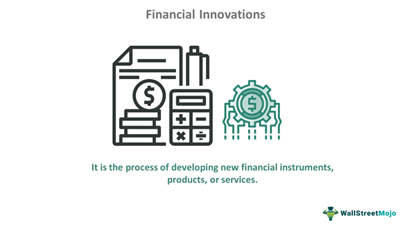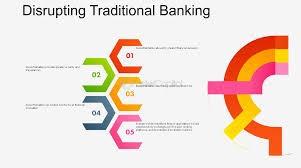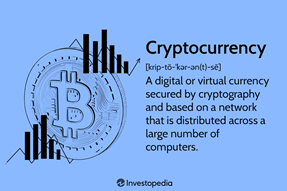Digital and Financial Innovation: CBDCs and Cryptocurrencies

Digital and Financial Innovation: CBDCs and Cryptocurrencies
by vivienne 10:59am Jan 09, 2025

Digital financial technologies are rapidly reshaping the global financial system. Among the most significant innovations in this space are Central Bank Digital Currencies (CBDCs) and cryptocurrencies, two developments that have the potential to transform how we think about money, payments, and financial systems. Both offer unique advantages and challenges, and their widespread adoption could fundamentally alter the economic landscape.
This article explores the rise of CBDCs and cryptocurrencies, their key differences, their impact on traditional financial systems, and the broader implications for the global economy. 
1. What are Central Bank Digital Currencies (CBDCs)?
CBDCs are a form of digital currency issued and regulated by a country's central bank. Unlike cryptocurrencies such as Bitcoin or Ethereum, which are decentralized and operate outside of government control, CBDCs are centralized digital assets backed by state authority. CBDCs are intended to function as a digital form of a nation's fiat currency, maintaining the same value and regulatory framework.
a. Types of CBDCs
Wholesale CBDCs: Designed for use by financial institutions and banks in interbank transactions and settlements. They are intended to enhance the efficiency and security of the financial system, particularly in cross-border payments.
Retail CBDCs: These are intended for the general public and would function similarly to cash, providing a digital means for consumers to make payments and store value. Retail CBDCs could potentially replace physical cash or serve as a supplement to it.
b. Objectives of CBDCs
Improved Payment Systems: CBDCs aim to streamline domestic and international payment systems, making them faster, cheaper, and more efficient. By using blockchain or distributed ledger technology (DLT), CBDCs can enable near-instantaneous settlements and cross-border transactions with minimal fees.
Financial Inclusion: A CBDC could provide access to digital banking services for individuals in underbanked or unbanked regions where traditional banking infrastructure is lacking. This could help bridge the digital divide and improve financial inclusion.
Monetary Policy Control: CBDCs offer central banks a new tool for implementing monetary policy. With direct access to digital currency, central banks can more easily track and influence the flow of money within the economy, potentially improving their ability to manage inflation, interest rates, and financial stability.
Reduced Transaction Costs: CBDCs could potentially reduce costs associated with printing, transporting, and storing physical cash. Furthermore, transactions on the CBDC network could be processed more efficiently than traditional payment systems, reducing the need for intermediaries and clearinghouses.

c. Challenges of CBDCs
Privacy Concerns: One of the primary concerns with CBDCs is the level of surveillance they might enable. Since transactions are digitally recorded, central banks would have the ability to monitor and track all financial transactions made by individuals. This could raise serious questions about personal privacy and government overreach.
Security Risks: Like any digital system, CBDCs are vulnerable to cyberattacks, which could jeopardize the integrity of the financial system. A secure and resilient infrastructure is crucial for the successful deployment of CBDCs.
Impact on the Banking System: CBDCs could disrupt the traditional banking model by allowing individuals to hold digital currency directly with central banks. This could undermine the role of commercial banks in the economy, particularly in terms of deposit-taking and lending.

2. What are Cryptocurrencies?
Cryptocurrencies are digital or virtual currencies that use cryptography for security and operate on decentralized networks, typically built on blockchain technology. The most well-known cryptocurrency is Bitcoin, but there are thousands of other cryptocurrencies, such as Ethereum, Ripple (XRP), Litecoin, and Solana.
Unlike CBDCs, cryptocurrencies are not issued or controlled by any central authority. They are generally considered to be decentralized, meaning they rely on a distributed network of nodes (computers) to validate transactions and maintain the integrity of the ledger.
a. Core Features of Cryptocurrencies
Decentralization: Cryptocurrencies are typically not controlled by any government or central bank. Instead, they rely on a decentralized ledger or blockchain, where all participants have equal access to transaction data. This system removes the need for intermediaries such as banks, which can reduce transaction fees and improve transparency.
Transparency: Transactions made on a blockchain are visible to all participants in the network. This feature can increase accountability and reduce fraud, as all transactions are publicly recorded and immutable (i.e., they cannot be altered once verified).
Security: Cryptocurrencies use advanced cryptographic techniques to secure transactions and control the creation of new units. This ensures that cryptocurrencies are highly secure and resistant to fraud, counterfeiting, or double-spending.
b. Key Advantages of Cryptocurrencies
Financial Sovereignty: Cryptocurrencies allow individuals to have more control over their own money, without reliance on traditional banking institutions or governments. This is particularly appealing in countries with unstable currencies or repressive financial systems.
Lower Transaction Costs: Cryptocurrencies often allow for peer-to-peer transactions with low fees, particularly for cross-border payments. This can make cryptocurrencies an attractive option for people who want to send money internationally or make small-value transactions without incurring high bank fees.
Access to Global Markets: Cryptocurrencies can be accessed and traded by anyone with an internet connection, enabling individuals in developing countries or regions with limited access to traditional financial systems to participate in the global economy.

3. CBDCs vs. Cryptocurrencies: Key Differences
While both CBDCs and cryptocurrencies are digital currencies, they have fundamental differences in their structure, purpose, and implications:
Aspect |
CBDCs |
Cryptocurrencies |
Issuer |
Central bank (state-backed) |
Decentralized (no central authority) |
Control |
Centralized, government-controlled |
Decentralized, community-driven (peer-to-peer) |
Regulation |
Regulated by national authorities and central banks |
Varies by country, often subject to legal uncertainty |
Privacy |
Potential for high surveillance, as transactions are monitored by central authorities |
Generally pseudonymous, though transactions are public on the blockchain |
Stability |
Stable, pegged to fiat currency (e.g., USD, EUR) |
Highly volatile, influenced by market demand and speculation |
Use Cases |
Centralized monetary policy, financial inclusion, digital payments |
Store of value, digital gold, remittances, decentralized finance (DeFi) |
Transaction Speed |
Likely fast, using blockchain or other DLTs |
Fast or slow, depending on blockchain and network congestion |
Security |
Government-backed, highly secure (with risks of hacking) |
Highly secure, but vulnerable to exchange hacks and scams |
4. The Future of Digital Currencies and Financial Systems
The development of both CBDCs and cryptocurrencies is likely to shape the future of money and finance in profound ways.
a. CBDCs: The Future of State-Controlled Digital Money
Monetary Policy and Economic Control: CBDCs could provide central banks with new tools for implementing monetary policy and managing the economy. For example, central banks could use CBDCs to directly control the money supply, offering more precise and effective tools to fight inflation or deflation.
Cross-Border Payments: CBDCs could help improve international payments by reducing costs, increasing transparency, and eliminating the inefficiencies of traditional cross-border banking systems. Central banks could develop frameworks for interoperability between different countries' digital currencies, making global transactions faster and cheaper.
Privacy and Trust: As CBDCs are government-backed, they would likely foster higher levels of trust among users. However, the trade-off could be a loss of privacy, as governments might have the ability to track and monitor all transactions in real-time.
b. Cryptocurrencies: The Future of Decentralized Finance (DeFi)
Disrupting Traditional Banking: Cryptocurrencies and decentralized finance (DeFi) could disrupt traditional banking by providing alternative ways to borrow, lend, and invest without intermediaries. For example, platforms like Uniswap and Aave allow users to trade assets and earn interest without going through banks.
Integration with Traditional Finance: As cryptocurrencies become more mainstream, traditional financial institutions may seek to integrate digital currencies into their services. This could lead to the rise of centralized cryptocurrency exchanges, custodial services, and cryptocurrency-backed loans.
Regulatory Evolution: Over time, governments will likely create clearer regulatory frameworks to ensure consumer protection, prevent fraud, and address potential risks such as money laundering or terrorism financing. This could help increase the adoption of cryptocurrencies and bring them closer to the mainstream.






